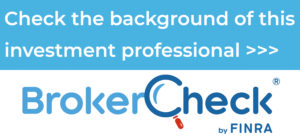THE CHALLENGES AND BENEFITS OF PET
OWNERSHIP
66% of American households have pets.
In 2022, Americans spent $136.8 billion on their pets—including pet food, veterinary care, grooming, boarding, insurance, and other pet-related products and services. (1) That amount is more than 50% higher than the amount spent in 2018, when expenditures reached $90.5 billion, according to the annual surveys conducted by the American Pet Products Association (APPA). (1) APPA projects that pet-related spending will reach $143.6 billion in 2023—a $6.8 billion increase.
Pets and the pandemic
For many pet owners, pets are family—and periods of isolation can strengthen that bond. Pet ownership grew dramatically during the pandemic, when many people worked remotely from home. The American Society for the Prevention of Cruelty to Animals® (ASPCA®) conducted a national poll that revealed about one in five households—roughly 23 million— acquired a cat or dog during the COVID-19 crisis. (2)
That increase is not surprising, considering the health benefits of owning a pet. Pets increase our opportunities to get outside, exercise, and socialize. Walking and playing with them can improve our moods while also decreasing our blood pressure, triglyceride levels, and cholesterol levels. The Centers for Disease Control and Prevention (CDC) has found that the bonds people create with their pets also help decrease feelings of loneliness, anxiety, and symptoms of PTSD. (3)
According to the 2023-2024 APPA National Pet Owners Survey, about 86.9 million U.S. households own a pet, which is approximately 66% of America’s households. (4) As dog-lovers might expect, dogs made up the largest group (65.1 million households), with cats coming in second (46.5 million households). Freshwater fish ranked third (11.1 million households), followed by small animals (6.7 million households) and birds (6.1 million households).
Costs vs. benefits
As the CDC reports on its website, there are many health benefits of owning a pet— including more opportunities to get outside, exercise, and socialize. Their companionship can help us manage depression and loneliness, and improve cognitive function in
older adults. (5)
But those benefits come with a price—whether you’re purchasing a pet or adopting it from a rescue organization. In its True Cost of Pet Parenthood Report for 2023, the petsitting network Rover revealed that the annual cost of pet-related goods and services
ranges between $610 and $3,555 for dogs and $325 to $1,600 for cats. Those costs include food, supplies, medical expenses, and other costs related to pet care.
“When it comes to budgeting for pet parenthood, nearly three-quarters (72%) of pet parents expected to spend up to $1,000 on upfront costs of bringing home a new pet (e.g., vaccinations, adoption fees, and essential supplies),” Rover reported. “Nearly a third (29%), however, reported the actual total cost was higher than expected.”
Despite the costs, 82% of respondents told Rover that their pet brings them “the most happiness out of everything they spend money on.”
Based on that information, a pet can be a good “investment” if you plan ahead—and make good choices. If you’re thinking about adding a pet to your household, do your homework first. The American Veterinary Medical Association (AVMA) and other online
sources offer tips for making the best choices for your household.
Thanks for checking out the blog.
Gregory Armstrong , CFP®
Sources
(1) American Pet Products Association (APPA): Pet Industry Market Size, Trends & Ownership Statistics
(2) ASPCA Press Release, May 26, 2021: New ASPCA Survey Shows Overwhelming Majority of Dogs and Cats Acquired During the Pandemic Are Still in Their Homes
(3) CDC: Healthy Pets, Healthy People: Understand the Risks and Benefits of Pets
(4) American Pet Products Association (APPA): Pet Industry Market Size, Trends & Ownership Statistics
(5) CDC: How to Stay Healthy Around Pets – Understand the Risks and Benefits of Pets
This material is for general information only and is not intended to provide specific advice or recommendations for any individual. There is no assurance that the views or strategies discussed are suitable for all investors or will yield positive outcomes. CDs are FDIC Insured to specific limits and offer a fixed rate of return if held to maturity, whereas investing in securities is subject to market risk including loss of principal.
Prior to investing in 529 Plan investors should consider whether the investor’s or designated beneficiary’s home state offers any state tax or other state benefits such as financial aid, scholarship funds, and protection from creditors that are only available for investments in such state’s qualified tuition program. Withdrawals used for qualified expenses are
federally tax free. Tax treatment at the state level may vary. Please consult with your tax advisor before investing.
This material was prepared by LPL Financial. Securities and advisory services offered through LPL Financial (LPL), a registered investment advisor and broker-dealer (member FINRA/SIPC).
Insurance products are offered through LPL or its licensed affiliates. To the extent you are receiving investment advice from a separately registered independent investment advisor that is not an LPL Financial affiliate, please note LPL Financial makes no representation with respect to such entity.
Securities and insurance offered through LPL or its affiliates are: 









